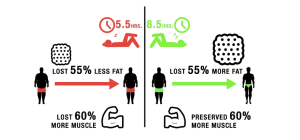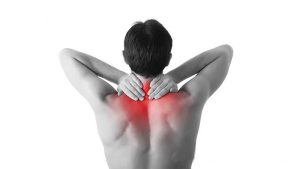Four out of five Australians will suffer from lower back pain at some point in their lives. It is the most common cause of job-related disability and a leading contributor to missed workdays.
Acute back pain vs. Chronic back pain
Acute back pain accounts for most lower back pain cases and lasts a few days to a few weeks. The majority of acute low back pain is mechanical in nature. A disruption in the way the components of the back fit together and move is usually the cause. Components namely include the spine, muscle, intervertebral discs, and nerves.
Subacute lower back pain is defined as pain that lasts between 4 and 12 weeks.
Chronic back pain is the pain that persists for 12 weeks or longer, even after an initial injury or underlying cause of acute lower back pain has been treated. Indeed, about 20 percent of people affected by acute lower back pain develop chronic lower back pain with persistent symptoms at one year.
Lower back pain Symptoms
Most people experience back pain in their lives. Likewise, it affects both men and women equally. Around 1 in 6 Australians have back pain. This pain can range from a dull, constant ache to a sudden, sharp sensation that leaves the person incapacitated. The type of pain you have will depend on the underlying cause of your back pain. Lower back pain symptoms are summarised below:
- Sharp, stabbing, dull, achy, or cramping pain;
- Inconsistent pain, in most cases followed by an up and down course;
- The pain may extend from the back into the buttock or outer hip area, but rarely down the leg.
- Buttock and leg pain, as well as numbness, tingling or weakness, which goes into the foot, are usually symptoms of sciatica, which frequently occurs with a herniated disc. It is also possible to have sciatica without back pain.
- Bending, lifting, sitting and walking can all worsen the pain.
Lower Back Pain Causes
There are many causes of Lower back pain. It sometimes occurs after a specific movement such as lifting or bending incorrectly. It may even be a result of an accident or injury. Pain can also develop over time due to age-related changes in the spine. Additionally, Sedentary lifestyles often set the stage for lower back pain. Not getting enough exercise weakens those supporting muscles, therefore, creating more stress on your joints and creating stiffness. Likewise, being overweight can have a dramatic take on your back. Consequently, carrying extra kilo’s around the mid-section, pulls the pelvis forward, creating stress on the lower back. This may cause issues like sciatica, a herniated disc, or a pinched nerve as the back is compensating for the weight.
Lower Back Conditions
Some examples of the most common conditions:
- Non-specific lower back pain including sprains and strains account for most acute back pain. Overstretching or tearing ligaments cause sprains. Strains are tears in tendon or muscle.
- Sciatica is caused by compression of the sciatic nerve, the large nerve that travels through the buttocks and extends down the back of the leg.
- Lumbar disc herniation or ruptured discs can occur when the intervertebral discs become compressed and bulge outward (disk herniation) or rupture, causing lower back pain.
- Lumbar spine arthritis or intervertebral disc degeneration occurs when the usually rubbery discs lose integrity as a normal process of aging. As the discs deteriorate, they lose their cushioning ability.
- Lumbar spine osteoporosis is a metabolic bone disease marked by a progressive decrease in bone density and strength, which can lead to painful fractures of the vertebrae.
- Spondylosis refers to the general degeneration of the spine and is linked with normal wear and tear. Usually occurring in the joints, discs, and bones of the spine as people get older.
Lower Back Pain Solutions
Chiropractic techniques for lower back pain generally depend on whether the pain is acute or chronic. The wide range of techniques applied at Chiro & Sports Med includes: joint mobilisations and adjustments, soft tissue techniques, muscle stretches, acupuncture, heat therapy, interferential therapy, ultrasound therapy, rehabilitation treatment and exercise prescription. Approximately 80% of Australians suffer from back pain during their lifetime. However, with early detection comes better results with treatment. It’s vital to have your back assessed and diagnosed as soon as possible by a professional. Surgery would be recommended if there is evidence of severe nerve damage. Also if diagnostic tests indicate any structural changes.
Whilst it is always recommended that you first see a Chiropractor for lower back pain, there are some actions, however, you can take to minimize it, even in acute back pain.
- Cold Treatment – put an ice pack on your lower lumbar surface over a thin kitchen towel for 20 min. Repeat 3-4 times daily.
- Choose many short trips over one long one.
- Be cautious of over moving as this may provoke pain.
- Drink more water than usual and avoid diuretics such as coffee, tea and alcohol.
- Increase protein intake in the diet and decrease sugar intake as protein repairs and sugar breaks down.
- Take painkillers if the pain is unbearable.
Chiro & Sports Med
If you would like to make an appointment with one of the chiropractors at Chiro & Sports Med simply call our office on 9817 2005 and one of our friendly staff will organize an appointment for you.





